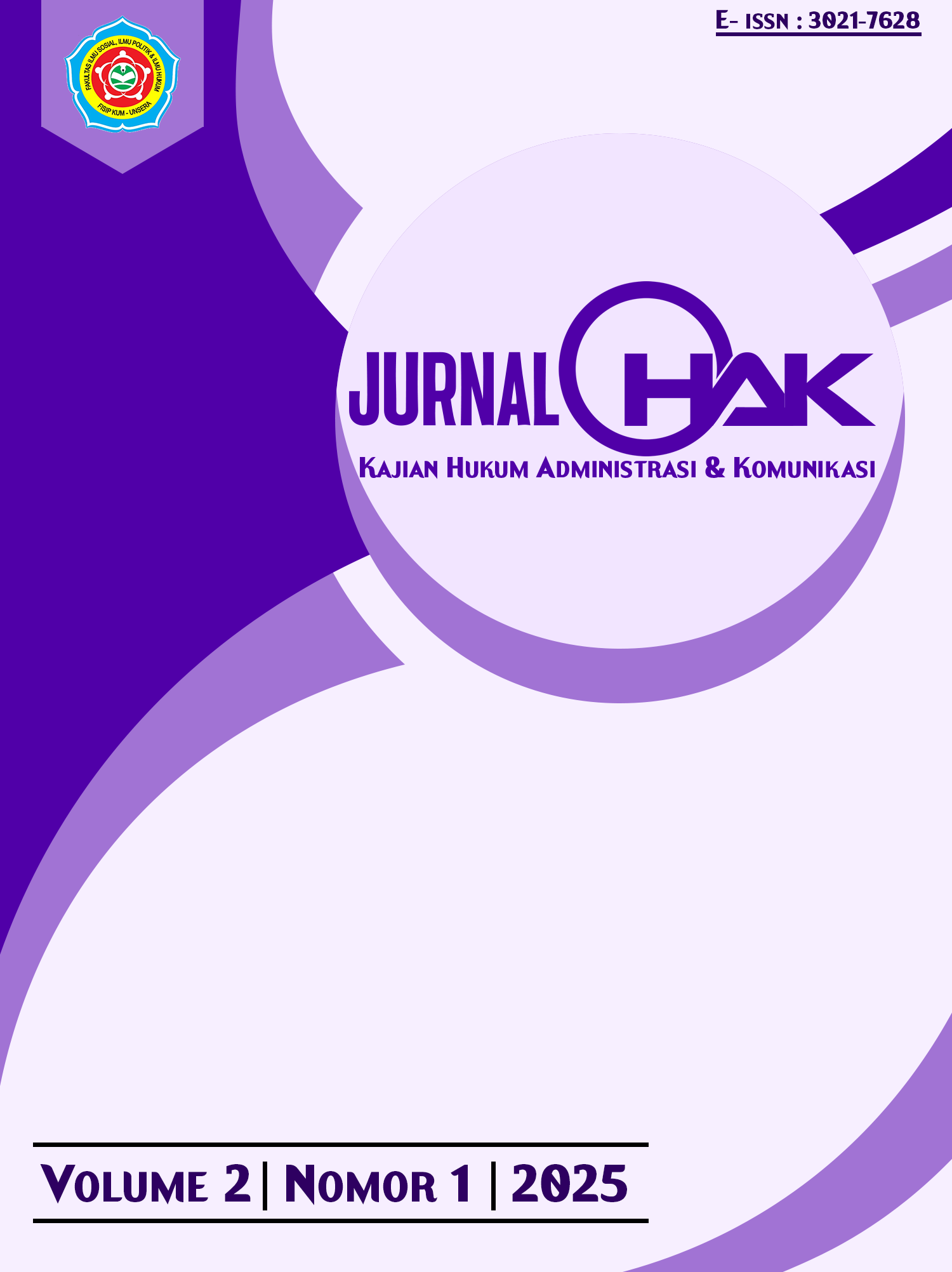Kebangkrutan Perusahaan dalam Prespektif Undang-Undang Nomor 37 Tahun 2004 Tentang Kepailitan dan Penundaan Kewajiban Pembayaran Utang
DOI:
https://doi.org/10.30656/jhak.v2.i1/10617Abstract
This journal examines corporate bankruptcy from the perspective of bankruptcy law, where a bankrupt company does not mean that the company is bankrupt. Because bankruptcy is an economic status, while bankruptcy is a legal status. If a bankrupt company has the status of bankruptcy, it must submit an application to the commercial court to obtain a bankruptcy decision. This study aims to determine the mechanism for handling a bankrupt company and the authority of a bankrupt company over the assets owned by the company. This study uses a qualitative approach with a descriptive-analytical method to analyze corporate bankruptcy against the economy from a legal perspective. The results of the study show that corporate bankruptcy shows an economic status, while obtaining legal status requires a commercial court decision with the status of becoming a bankrupt company. The authority of a bankrupt company over its assets is only limited to increasing the company's profits or assets.
Keywords: Bankrupt; Insolvency; Company; Commercial Court.
References
Hoff, Jerry. Undang-Undang Kepailitan Indonesia. Penerjemah: Kartini Mulyadi. Jakarta: P.T. Tatanusa, 2000.
Ibrahim, Johnny. Teori dan Metodologi Penelitian Hukum Normatif. Malang: Bayumedia Publishing, 2018.
Sastrawidjaja, Man. Hukum Kepailitan dan Penundaan Kewajiban Pembayaran Utang. Bandung: Alumni, 2006.
Sinamo, Nomensen. Metode Penelitian Hukum dalam Teori dan Praktek. Jakarta: Bumi Intitama Sejahtera, 2010.
Sjahdeini, Sutan Remy. Hukum Kepailitan (Memahami Faillissementsverordening Juncto Undang-Undang No. 4 Tahun 1998). Jakarta: Pustaka Utama Grafiti, 2002.
Downloads
Published
Issue
Section
License
Copyright (c) 2025 JURNAL HAK

This work is licensed under a Creative Commons Attribution-ShareAlike 4.0 International License.



